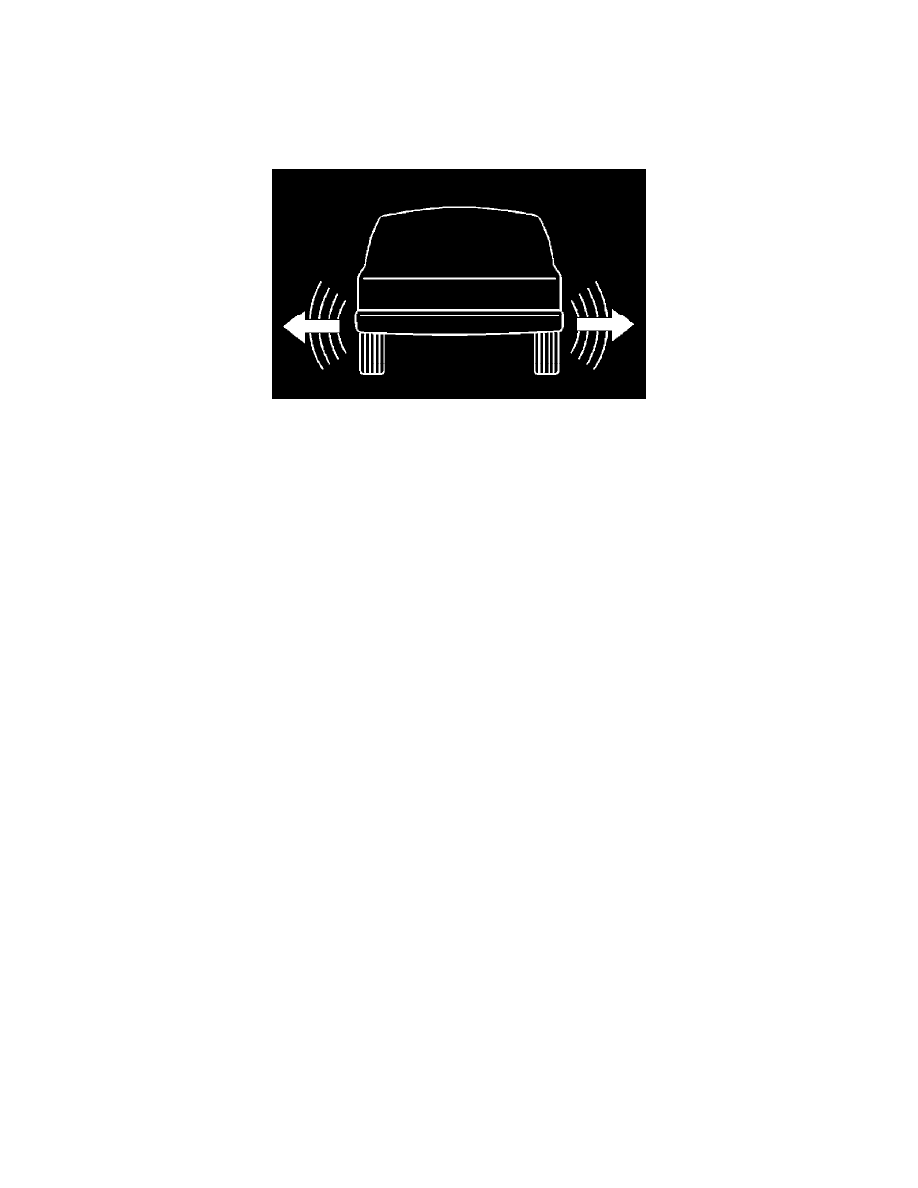XL-7 2WD V6-3.6L (2007)

4. Measure the wheel alignment if any of the following conditions exist:
^
The tread blocks have feathered edges (3).
^
The outer tread blocks are worn more than the inner tread blocks (2).
^
The inner tread blocks are worn more than the outer tread blocks (2).
5. Inspect the struts or the shock absorbers if the tire tread exhibits a cupped appearance (3).
Tire Diagnosis - Waddle Complaint
Tire waddle is a side to side movement at the front of the vehicle and/or the rear of the vehicle. Tire waddle can be caused by the following conditions:
^
A steel belt not being straight within the tire
^
Excessive lateral runout of the tire
^
Excessive lateral runout of the wheel
The tire waddle is most noticeable at a low speed of about 8-48 km/h (5-30 mph). Tire waddle may appear as ride roughness at 80-113 km/h (50-70
mph). Tire waddle may appear as a vibration at 80-113 km/h (50-70 mph).
Inspection Procedure
1. Raise and support the vehicle with safety stands.
WARNING:
Wear gloves when inspecting the tires in order to prevent personal injury from steel belts sticking through the tire.
2. Perform the following preliminary inspection:
a. Mark the tire with a crayon in order to note the start and the stop position.
b. Rotate each tire and wheel by hand.
c. Inspect the tire for bulges or bent wheels. Replace as necessary.
3. Use tire substitution in order to identify the faulty tire. Perform the following steps for a tire substitution check:
a. Use a comparable tire in order to replace each tire, one at a time.
b. Test drive the vehicle.
c. If the problem is tire or wheel related, you will eliminate the problem when you remove the faulty tire from the vehicle.
Vibration Analysis - Tire and Wheel
Vibration Analysis - Tire and Wheel
Test Description
The numbers below refer to the step numbers in the diagnostic table:
4.
A build-up of foreign material on a tire and wheel assembly and/or a damaged, abnormally or excessively worn tire and wheel assembly could cause a
vibration disturbance.
6.
Tire and wheel assemblies that exhibit excessive runout when measured while mounted on the vehicle, may or may not be contributing to, or causing a
vibration disturbance. On-vehicle runout, if present, could contribute to, or cause a vibration disturbance, but the cause of the on-vehicle runout may
not be the tire and wheel assemblies.
7.
Tire and wheel assemblies that exhibit excessive runout when measured off of the vehicle could cause a vibration disturbance.
9.
Tire and wheel assemblies that exhibit marginal runout-within acceptable limits, but close to the maximum-when measured off of the vehicle could
still be contributing to a vibration disturbance, if its mating hub/axle flange also exhibits marginal runout. When the tire and wheel assembly and the
hub axle flange are mounted to each other, the combined stack-up of their marginal amounts of runout could combine to produce an excessive amount
of runout, which could cause a vibration disturbance.
14.
